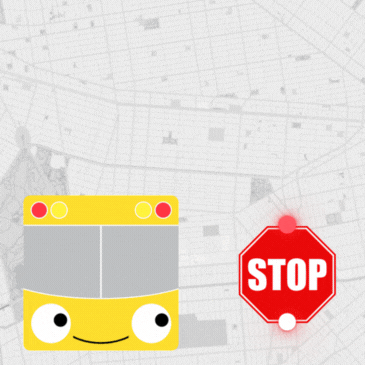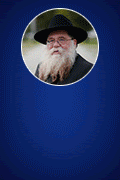From the West Coast to the East Coast, and in many places in between, collegians at schools such as New York University, Columbia University, the University of Southern California, the University of Maryland and the University of Florida will be asking the four questions, and telling the story of the Jewish people’s birth and deliverance from slavery.
Chabad Seders Worldwide Explore The Freedom to Do Something
On Monday night, April 2nd, more than 10,000 students will attend Chabad-led Pesach seders on more than 100 campuses in the United States, Canada, England, Australia and Israel.
From the West Coast to the East Coast, and in many places in between, collegians at schools such as New York University, Columbia University, the University of Southern California, the University of Maryland and the University of Florida will be asking the four questions, and telling the story of the Jewish people’s birth and deliverance from slavery.
“On practically every campus with a significant Jewish student body, Chabad will be hosting stimulating seders in a welcoming, family environment,” reports Rabbi Moshe C. Dubrowski, director of operations for the Chabad on Campus International Foundation.
Dubrowski points out, though, that students in other countries won’t feel left out. There will be seders at Oxford and Cambridge in England, and at Hebrew University and the Technion in Israel. So too, will students in Buenos Aires and New South Wales, Australia celebrate the Pesach seder together at Chabad.
And for those backpacking or enjoying some time in the sun – more than a few universities will be on break next week – or spending a semester abroad, Chabad will be reaching out. A Web page administered by the worldwide Chabad-Lubavitch movement currently directs those looking for a spot at the seder table; located at http://www.chabad.org/holidays/passover/seders.asp, the online directory boasts an extensive menu of Pesach festivities the world over, including such far flung places as Kathmandu, Mumbai, and Rio de Janeiro.
All together, more than 4000 Chabad seders around the world all take place this Monday night.
“The Haggadah tells of four sons, from the wise to the wicked, who all participate in the seder,” explains Rabbi Moshe Kotlarsky, Chabad on Campus’ chairman of the board, on the fact that pretty much wherever Jews are found, Chabad emissaries will be there. “Chabad’s approach is very much about the unheard-of fifth son, who may not even know there’s a seder.”
Rabbi Yonah Blum, who directs Chabad at Columbia University, hails the holiday as an incredible opportunity for Jews from all walks of life to sit down together. The first seder, to be held Monday night, will be hosted at the Low Library, a prestigious location on campus, “usually reserved for official university events,” says Blum. “We are expecting a very eclectic group of guests. Just like the diversity of the four sons, we are expecting to have the entire campus represented.”
Rabbi Eli Backman, director of the Bais Menachem Chabad Jewish Student Center at the University of Maryland, says he expects between 45 and 70 guests for the seder, but that while reservations are encouraged, no one will go away hungry.
“We have an open door policy,” says Backman. “Whether you RSVP or not, come on over.”
“Pesach was the beginning of our becoming a people,” continues Backman. “To spend it together as a people is what Pesach is all about.”
Rabbi Berl Goldman says that alongside the traditional recitation of the Haggadah and a full meal, he will briefly examine what it means to be Jewish at his seder, to be held at the Lubavitch Chabad Jewish Center at the University of Florida.
“Today’s student is very bright and is bombarded with so much information and they want to know what it means to be Jewish in Gainesville, Fla.,” he explains. “We try to express those issues.”
Hoops or Horseradish
Goldman — who will be hosting a seder for 350 in a tent set up just outside the Chabad Jewish Center — says, tongue in cheek, that students “want to know how eating and choking on matzah and maror is meaningful for them.” During the seder, Goldman will discuss the lessons of Exodus, freedom, liberation, and limitation. “We focus on making Torah relevant for students,” he says.
Chuckling, he adds that this year students will have to decide between basketball and matzah, since the school might be playing in the national basketball championships on the night of the seder. “Choose matzah,” Goldman confides, “and experience a spiritual transformation that can come with really delving into the lessons of freedom and slavery intrinsic to this holiday.”
Rabbi Dov Yona Korn, of Chabad House at NYU, brings the Pesach lesson of freedom into the realm of self and society, something he says every individual has to examine. “Society has a lot of expectations,” says Korn, and the seder provides an opportunity to reflect on “who am I and who do I want to be, and to give themselves the freedom to find that voice.”
For Korn, the Jews’slavery in Egypt is a metaphor – a state of being – and the seder is much more than drinking four cups of grape juice and reading the Haggadah. “It is a cultural, spiritual and personalized experience.” The grape juice, Haggadah and other aspects of the seder are “tools to release ourselves from a self-imposed prison.”
“There are two components to freedom: the freedom from something, and the freedom to do something,” explains Kotlarsky. “Pesach, while commemorating the awesome miracle of our deliverance from Egypt, is really about the freedom to do something truly revolutionary: to be Jews.”












